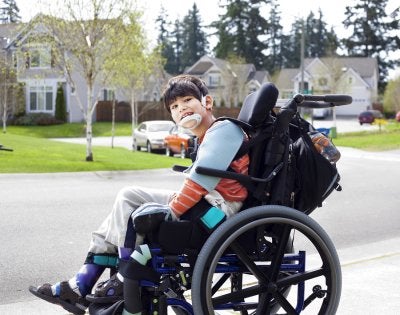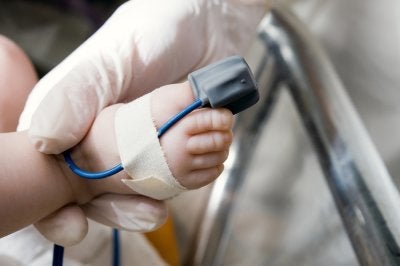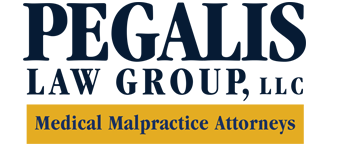-
Teaching Your Kids About the Importance of Handwashing
Handwashing is a significant issue in medical malpractice cases. If your case involves an infection, one of the first things a medical malpractice lawyer will ask you is if you saw your doctor wash his or her hands. However, handwashing doesn’t just matter in the medical setting. Washing your hands routinely daily is one of the most effective ways you can prevent the spread of infection. It’s even more important to teach your kids the importance of handwashing, especially at school, where germs run rampant. December 4-10 is Handwashing Awareness Week—the perfect time to focus on teaching your kids the importance of washing their hands. This information will help you get the point across.
 Teach the 4 Principles of Hand Awareness
Teach the 4 Principles of Hand Awareness
The 4 Principles of Hand Awareness has been accepted by the American Medical Association and the American Academy of Family Physicians as the gold standard for keeping hands clean. By teaching these principles to your kids, you will equip them with everything they need to keep their hands germ-free. The first principle is to wash hands any time they are dirty and before eating. The second principle is to never cough into your hands, and the third principle is to never sneeze into your hands. The fourth principle is to avoid putting fingers in the nose, eyes, or mouth. Following these rules will reduce your kids’ chances of picking up a communicable infection that could be avoided.Lead by Example
Your kids learn their handwashing behavior from you. Be a model of good habits by following the 4 Principles of Hand Awareness yourself. Cough and sneeze into your elbow and always wash your hands before preparing food and before eating. When washing your hands is a habit for you, your kids are sure to pick up on it.At Pegalis & Erickson, we’re here to help when a medical mistake, like failing to wash hands, leads to a serious health problem. When you need a medical malpractice attorney on Long Island for birth trauma, medical negligence, or another medical injury, please call (516) 684-2900.
-
Reducing Your Infant’s Risk of SIDS
Sudden infant death syndrome (SIDS) is feared by parents everywhere. Medical experts still aren’t sure exactly what causes SIDS. It is thought that infants who die of SIDS had an immature arousal center in the brain that failed to wake them up upon having difficulty breathing. Unfortunately, SIDS can occur even when parents take precautions to prevent it. It’s important to understand the risks of SIDS and to do everything possible to reduce your infant’s risk.
Know the Risks
Medical experts recommend that parents be cautious about SIDS until their children turn one year of age. However, the peak time for SIDS deaths is between two and four months. It appears that male infants, African-Americans, Native Americans, low-birthweight babies, and preemies are at the highest risk of SIDS, as are infants who are exposed to cigarette smoke prenatally or postnatally. Avoid Co-Sleeping
Avoid Co-Sleeping
Co-sleeping refers to the practice of putting a baby to sleep in the parents’ bed. While some people believe this promotes a closer bond between parent and child, co-sleeping is very dangerous because infants can easily suffocate. Instead, parents can place infants to sleep in their own bedroom, but only in a bassinette. When the infant is older, he or she can then be moved to a crib in the nursery.Use the Right Position
It’s vitally important to only put your infant to sleep on his or her back. Sleeping on the stomach or side can prevent infants from getting enough oxygen. Back sleeping is crucial even for short naps. To prevent flattening of the head, do supervised tummy time with your baby every day.Clear the Crib
It can be tempting to adorn an infant’s crib with crib bumpers, beautiful quilts, and soft stuffed animals. But the only thing that should be in a crib is the baby. Any object placed into the crib could pose a risk to the baby during sleep. -
Choosing and Using Durable Medical Equipment for Kids with Cerebral Palsy
After a birth trauma that results in cerebral palsy, parents face many choices in helping their children overcome obstacles caused by their disabilities. Medical equipment can help children with cerebral palsy in a number of different ways, including with mobility issues. In cases in which medical malpractice leads to a birth injury, your cerebral palsy lawyer can seek compensation for the future costs associated with this kind of medical equipment. Here are some of things parents of kids with cerebral palsy should consider when choosing and using medical equipment.
 Choosing Equipment
Choosing Equipment
Your child’s doctor and/or a physical therapist will play a central role in working with you to select the right medical equipment for your child. Often, the doctor will refer you to a representative for a provider for a piece of equipment that may benefit your child, and that representative will evaluate your child’s case and make a recommendation based on your child’s specific needs. Some of the things that should be considered when choosing equipment for your child are expectations for growth and function, your child’s need for body and head support, his or her history of pressure sores, and whether manual or powered equipment is best. Your budget and preferences are also considerations that will help to shape the final decision.Using Equipment
When your child gets new medical equipment, it is helpful to attend any training sessions provided by the company or recommended by the doctor, or a therapist. Know who to call when you have questions, and alert your doctor if you are not getting the expected functionality out of any equipment you choose. Adaptions may be necessary to meet the particular needs of your child.Birth injuries are life altering for a child and also a family, but Pegalis & Erickson, LLC is here to help you get the assistance and compensation you deserve for your child, and to help you take care of your child’s special needs. Talk to a birth injury lawyer in Long Island today by calling (516) 684-2900.
-
Understanding Fetal Distress
Fetal distress occurs when the fetus is deprived of oxygen during labor. Typically, the doctor can determine if the fetus is in distress by monitoring the heartbeat, but when it is not discovered, it can lead to serious birth injuries. If your doctor fails to diagnose fetal distress or takes actions that cause fetal distress, and your child was seriously injured, you should investigate whether medical negligence was involved.
 Fetal distress usually occurs as the result of a past term pregnancy or because of labor complications. It can be treated by delivering oxygen to the mother, increasing intravenous fluids, or turning the woman on her side. If the distress does not resolve, a cesarean delivery may be required.
Fetal distress usually occurs as the result of a past term pregnancy or because of labor complications. It can be treated by delivering oxygen to the mother, increasing intravenous fluids, or turning the woman on her side. If the distress does not resolve, a cesarean delivery may be required. If fetal distress occurred during your delivery and now your baby is suffering as a result, contact Pegalis & Erickson, LLC for a review of your case to see if medical malpractice could be to blame. Our medical malpractice attorneys have a track record of winning compensatory settlements for families who are facing the repercussions of birth injuries on Long Island . Talk to an attorney today by calling (516) 684-2900.
Recent Posts
Popular Posts
categories
- Uncategorized
- Infographic
- Patient Safety
- Patient Health
- Stillbirth
- Birth Injuries
- Medical Malpractice
- Medical Negligence
- Event
- Erb's Palsy
- Injury
- ER
- Video
- Cancer Misdiagnosis
- Medication Errors
- Cerebral Palsy
- Medical Negligence Lawyer
- Anesthesia Injuries
- Brachial Plexus
- Prostate Cancer
- About Us
- Men's Health
- Skin Cancer
- Breast Cancer
- Misdiagnosis
